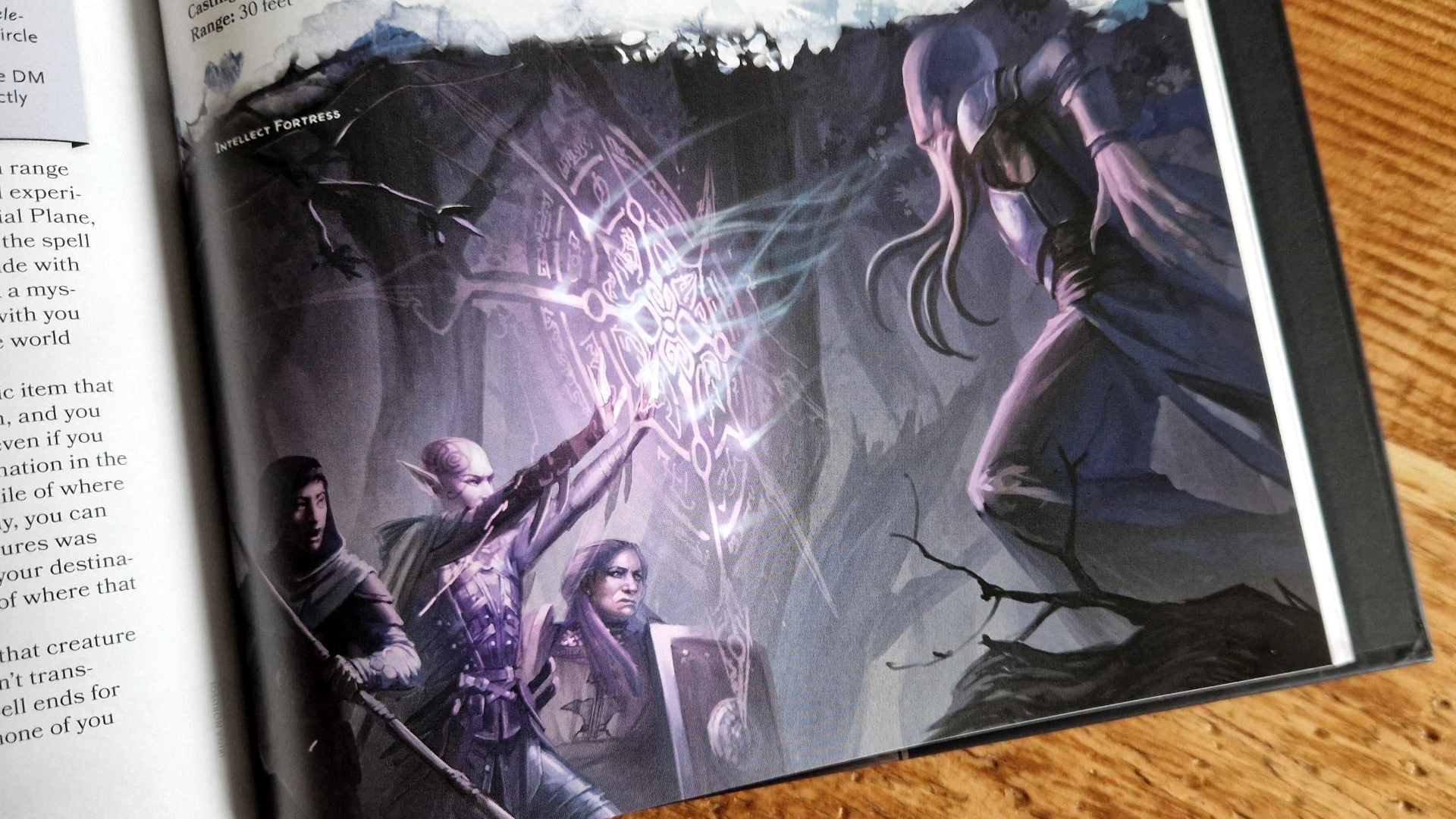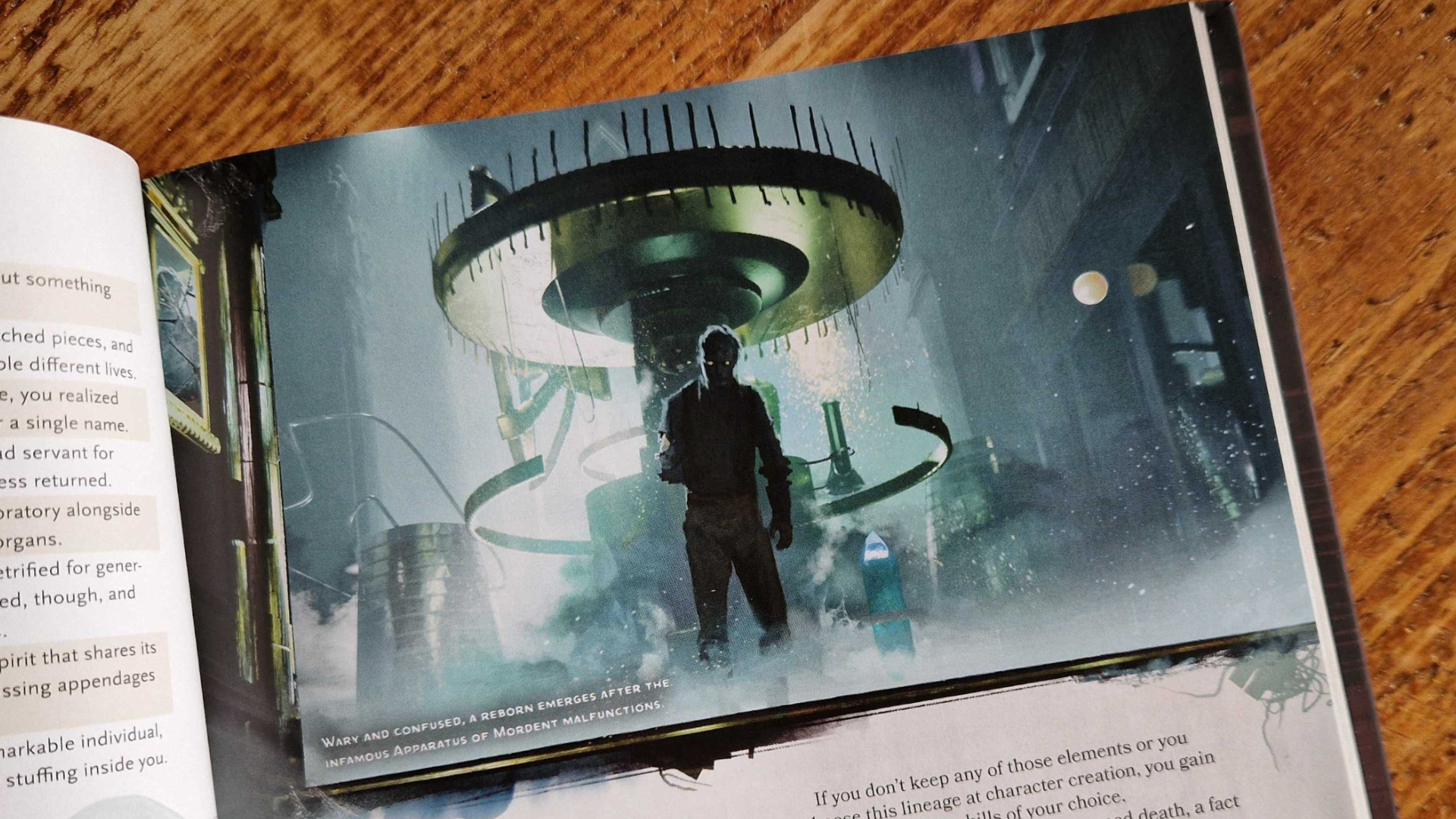The Psion is a new D&D class for mental magic, and it almost works
D&D's designers try once again to crack the elusive Psionics class

A brand new D&D class was not on my bingo card for 2025, and yet! The Psion, a spellcaster who uses ‘innate mental powers’ rather than the arcane, divine, or primal magic of other casting classes, may finally be nearing an official release as the game’s 14th class.
That makes this another Intelligence-based class, like the Wizard or Artificer, but with its own distinct flavor. Rather than learning spells through boring ol’ books, or infusing magic into weapons, armor and gadgets, psionics are a force that results from the sheer power of the mind.
What even are psionics, you ask? Psionics is mental magic that results from the force of your own mind, like Star Wars’ Jedi or Stranger Things’ Eleven: connecting to other minds telepathically, moving objects and creatures, throwing up force fields, conjuring fire (pyrokinesis) and the like. The concept was highly popular in American science fiction of the mid-20th century, applying a layer of scientific rigour to hand-waving psychic phenomena. D&D and the best tabletop RPGs have featured psionics in various forms since its first edition in the '70s, though its inclusion has often complicated the game’s usual mechanics in the process.
Back when D&D Fifth Edition was first released, a psionics-based class called the Mystic went through several rounds of playtests, resulting in a hefty, 30-page document that tried to describe the class’ sprawling new mechanics. Eventually, the class was deemed too unwieldy, too complex, and too disconnected from the rest of the game’s systems to be workable.

The Psion isn't the first class to be reawakened or reshaped for the latest rules; D&D's least-played class recently enjoyed an upgrade, while the new D&D Frankenstein subclass jolts the Artificer back to life.
D&D’s design team released a playtest version of the Psion on May 27, clearly with an eye on a future book supplement, should playtesters respond better than they did last time around.
Unlike the Mystic, which ditched the usual spellcaster chassis for a patchwork of ‘Talents’ and ‘Disciplines’, the Psion is a ‘full caster’ with the same spell slot progression as a Wizard, Bard, Cleric, or Druid. It’s clearly a response to the failings of the Mystic playtest, seeking to introduce psionics in an accessible way that integrates relatively easily into the rest of D&D’s mechanics. But how does the Psion actually play?
The Psion leans heavily on the psionics-flavored subclasses we’ve seen in recent years, including the Psi Warrior Fighter, Soulknife Rogue and Aberrant Sorcerer listed in the 2024 Player’s Handbook.
Weekly digests, tales from the communities you love, and more
You’re effectively a spellcaster with an additional pool of ‘Psionic Energy Dice’ you can use to enhance attacks and ability checks, or help expand the functionality of other class features. A level one Psion, for example, gets an ability called ‘Telekinetic Propel’, which lets you push or pull creatures using your psionic power, while rolling an Energy Die determines how far you’re able to move them. These dice start as a d6, end up as a d12, and are regained over a Short Rest once you hit Level 5, much like Bardic Inspiration Dice.
At early levels, you also gain Psionic Disciplines, which are a little like Fighting Styles or Warlock Invocations, generally offering additional uses for your Energy Die, improving attack accuracy, damaging creatures when they fail a saving throw, or boosting your persuasiveness out of combat. One Discipline lets you cast certain spells as a Bonus Action, too – like a limited version of the Sorcerer’s Metamagic.

Another core mechanic lets you switch between offensive and defensive battle stances, either aiding your damage output or improving your chances of succeeding saving throws.
The subclasses narrow down into more specific playstyles. There’s the Psi Warper, which is an expert in teleporting yourself and others; the Psykinetic, with a concentration-free Telekinesis that lets you throw gargantuan Krakens and Tarrasques around the map; the Telepath, which can pry into creature’s minds without their knowledge; and the Metamorph, whose control over reality allows it to distort its body into an ‘organic’ weapon.
There’s a similar problem that the Brawler Fighter subclass had during playtests last year, in that the Psion cribs together a number of existing, but disconnected features in the hope that they hold together as a solid class identity. Many subclass features bowl down to ‘this existing spell, but a little better’ – and while the Psion has telepathy from the start, it’s only to a range of 5ft, increased to 10ft for the dedicated Telepath subclass. Given the Aberrant Sorcerer can telepathically communicate to creatures miles away, it’s a strange restriction, and suggests that the Psion isn’t quite ready to come out of the oven.
The elegance of the Psion is in how well it integrates existing D&D mechanics – possibly to a fault. But it offers some fun ideas, a clear design philosophy, and the chance to increase the paltry number of Intelligence-based classes. For that, I’m all for it.
Looking for more adventure? Be sure to check out the best D&D books, or the best board games.

Henry St Leger is a freelance technology and entertainment reporter with bylines for The Times, GamesRadar, IGN, Edge, and Nintendo Life. He's a former staffer at our sister site TechRadar, where he worked as the News & Features Editor, and he writes regularly about streaming, games, D&D, and a host of home technologies including smart speakers and TVs. He lives in London with his Nintendo Switch (OLED) and spouse (not OLED).
You must confirm your public display name before commenting
Please logout and then login again, you will then be prompted to enter your display name.


